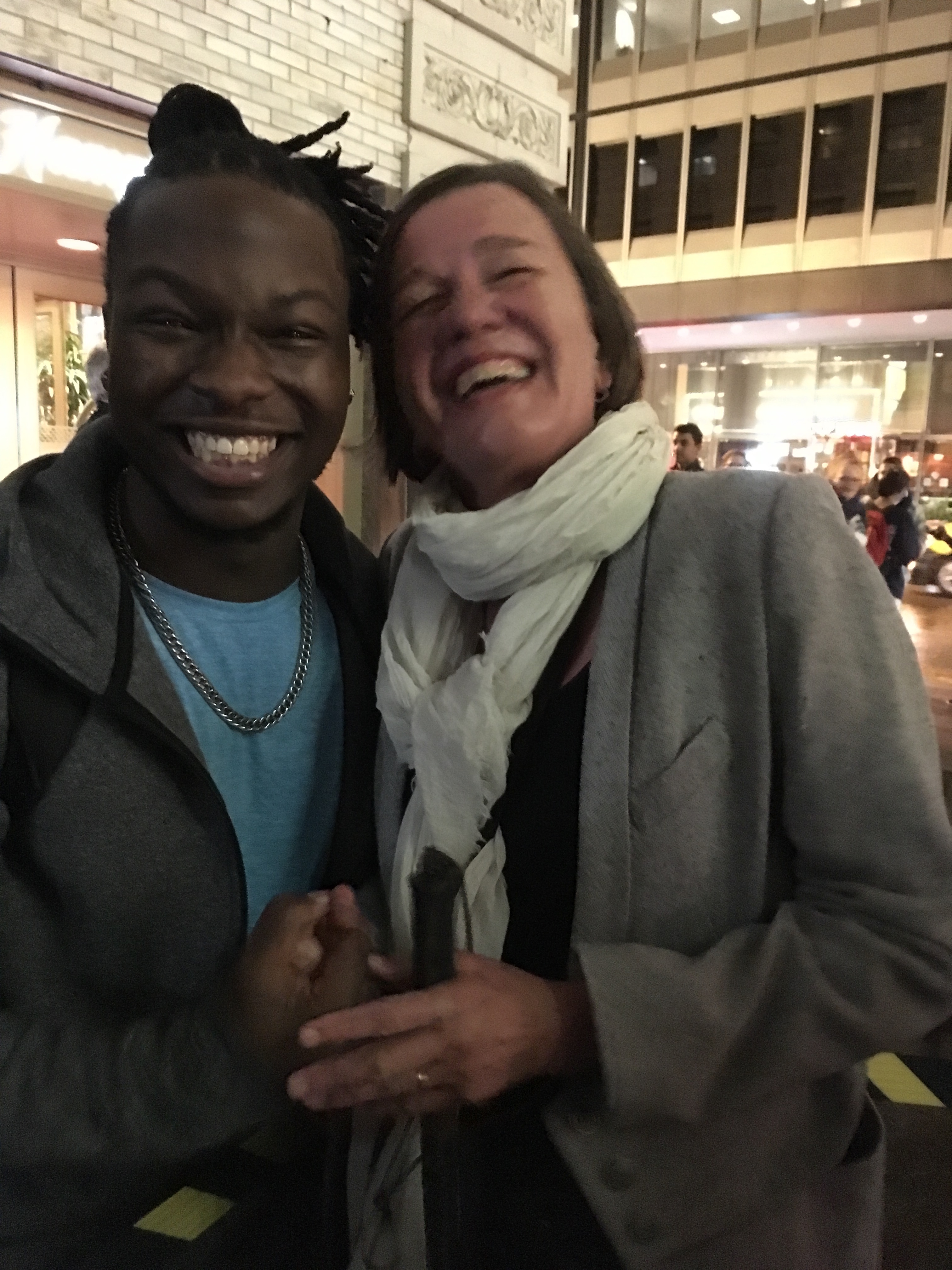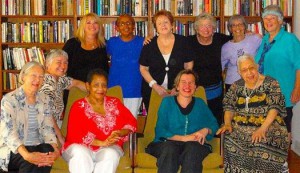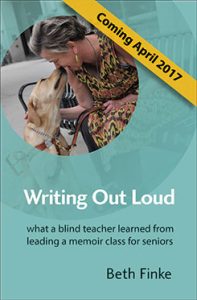Hamilton to be Sued for Accessibility, But is it Reasonable?
by Beth Finke

That’s me and Lafayette outside after the Chicago preview performance. Or me and Jefferson. Whichever you prefer.
An NPR story this past week reported that a theatregoer who is blind is suing the producers and the theater that’s offering the hit musical “Hamilton” in New York City because they are not offering headsets with live audio description for theatergoers who are blind or have visual impairments.
You regular Easterseals blog readers know that I’m a huge fan of the word “reasonable” when it comes to reasonable accommodations for people with disabilities, but in my view, the “reasonable” part applies to both parties. Is it reasonable for a blind patron to insist the theater have a paid audio describer on hand at live productions of Hamilton for people who can’t see the stage?
Sure, someone would be there live to describe the actor’s movements, but at what expense? Who on Earth would want to mask the sensational sound of the live music on stage by wearing a headset?
Thanks to my dear friend Colleen, I was able to attend a preview of Hamilton when it opened in Chicago last year. Audio description was available at the performance we went to, but with so much information out there about the hit musical online and in audio books, I didn’t use them. I already knew that this would be one theater piece that would be more about music than action. Here’s an excerpt from my review. The excerpt opens with a description of my husband Mike buying me the CD ahead of time:
“He even bought me the CD and read some of the lyrics to me before I figured out where to find them online to research the wording myself. Anytime he left home, he’d return to the sound of the Broadway performance blasting from our living room speakers. ‘You can leave it on,’ he’d sigh, but I turned it off. More fun to listen alone anyway. Then you could dance and sing along.”
In my review, I report on what a good sport Mike was about my little obsession. He asked questions about — but did not attend — “In the Heights” (Lin-Manuel Miranda’s first Broadway musical) after Colleen and I went to see Chicago’s Porchlight Music Theatre’s production a few weeks before we went to Hamilton. And, being a non-fiction kind of guy, Mike happily listened along when I’d go to bed with the audio version of Ron Chernow’s Alexander Hamilton (the biography that inspired Hamilton the musical).
Colleen chose to listen to the book on audio, too, rather than read it in print. The audio book is 38 hours long. It is absolutely astounding that the musical Hamilton covers pretty much the entire Alexander Hamilton story in three hours. The founding father packed a lot into his short life, leaving more than 26 written volumes of work and oodles and oodles of personal letters behind when he died. And when he was alive? Alexander Hamilton liked to talk. To tell all that in three hours, you need to fit a lot of words in to every measure. You can’t hold onto a musical note very long — you’ve gotta move right along to the next scene. Using hip-hop was a no-brainer. And, simultaneously, brilliant. One thing that is stunning about Hamilton is that it never stops, and there are no speaking parts. Every word is sung. You wouldn’t want to miss a word, and I think you’d miss a lot with someone in your headset describing the action.
The NPR story reports that Scott Dinin, the attorney representing the blind theatergoer, is not seeking damages for his client.
“He can’t under the terms of the ADA. He’s trying to make sure that theater becomes more inclusive by spotlighting the problem using Broadway’s biggest hit.”
Is that reasonable? I don’t think so.








 A
A 


 The 2017 Academy Awards presentation was all about diversity. So where were the actors with disabilities?
The 2017 Academy Awards presentation was all about diversity. So where were the actors with disabilities? We live in Chicago, and trust me, O’Hare International Airport can be an overwhelming sensory experience for anyone, let alone a child with a disability. Our son Gus is grown now, and as a child he only flew with us twice. The first time, he was 2 years old. After the second time, when Gus was 10 years old, we vowed he’d never fly with us again. But now maybe we’ll consider giving it another try.
We live in Chicago, and trust me, O’Hare International Airport can be an overwhelming sensory experience for anyone, let alone a child with a disability. Our son Gus is grown now, and as a child he only flew with us twice. The first time, he was 2 years old. After the second time, when Gus was 10 years old, we vowed he’d never fly with us again. But now maybe we’ll consider giving it another try. The United States edition of The Guardian is looking for stories from people who feel they’ve struggled to find or secure work because of their disability, but if you want your story included, you’re going to have to write it quickly: The deadline to submit is this Thursday, February 23, at midnight.
The United States edition of The Guardian is looking for stories from people who feel they’ve struggled to find or secure work because of their disability, but if you want your story included, you’re going to have to write it quickly: The deadline to submit is this Thursday, February 23, at midnight.
